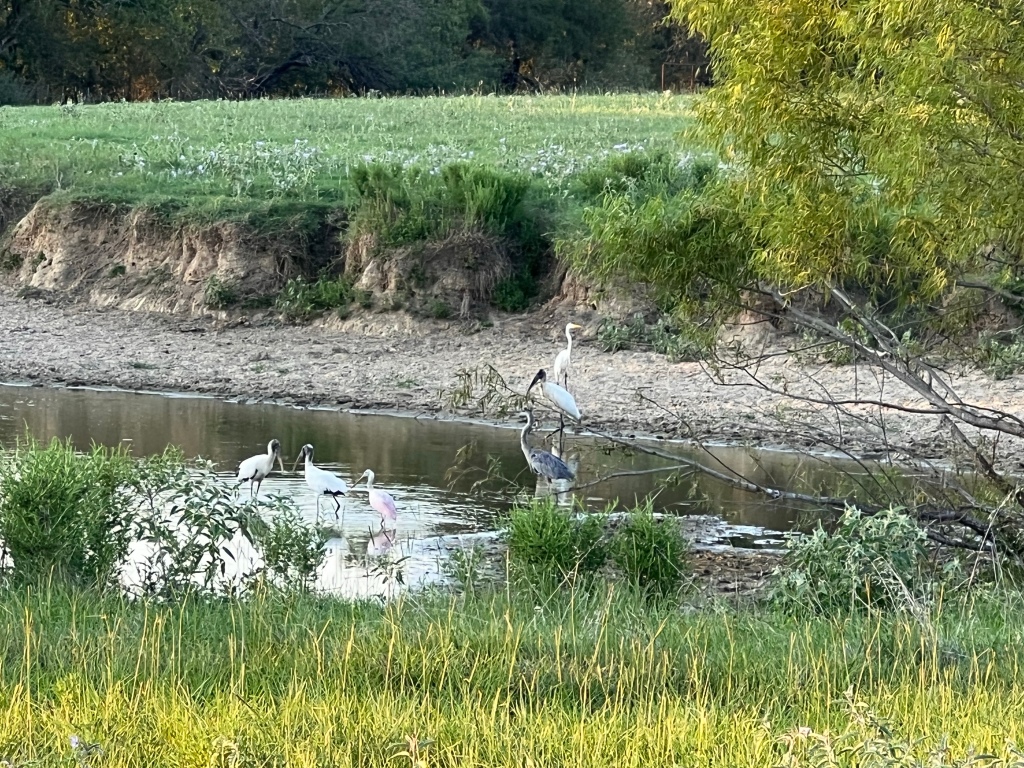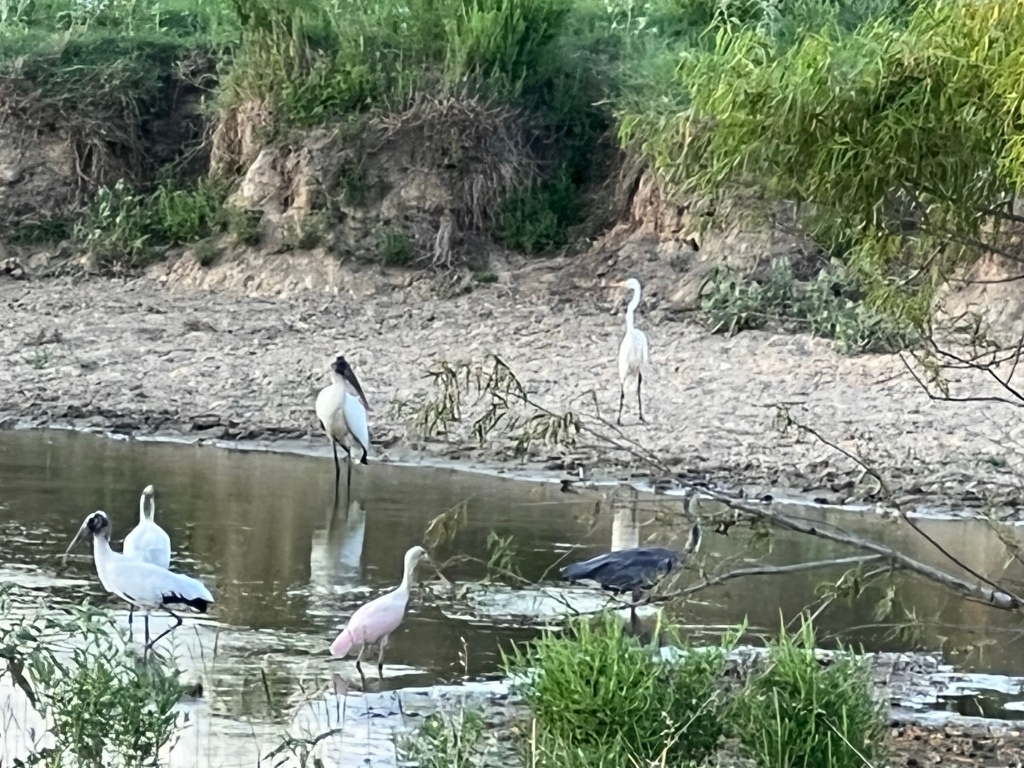by Sue Ann Kendall
I still get the feeling sometimes that I live in an aviary. I can’t believe how many interesting birds drop by my property and let me observe them. Yesterday was a particularly good day, because in addition to the storks who’ve been visiting for a couple of weeks, I found something different, a roseate spoonbill!

It was especially good to see the spoonbill (Platalea ajaja) in person and watch it eating up close through my binoculars, since I had seen some specimens when we went to the Texas A&M Biodiversity Research and Teaching Collections last month. Oops, I just realized that I hadn’t written up that event, so darn it! You can go read about it in my personal blog post, So Many Dead Things. Below are the specimens I looked at.


The spoonbills are coastal birds, which is why you don’t see too many of them here in the middle of Texas. I’ve seen them one other time, though. According to Wikipedia as reproduced on the iNaturalist site, many were seen outside their usual range in 2021, so perhaps this behavior is continuing this year.

They are fun to watch as they eat, swinging their bills from side to side to catch delicious (and hopefully pink, to keep their feathers pretty) foods. The one I saw was parading alongside three storks on the shore of the tank behind my house, which appears to be a hotbed of small edible items these days.
I wonder if this one got separated from his or her buddies and took up with the storks, which also hang around in small groups. They were getting along just fine and didn’t seem to be bothering my resident shore birds at all.
Here’s some more about their eating habits:
This species feeds in shallow fresh or coastal waters by swinging its bill from side to side as it steadily walks through the water, often in groups. The spoon-shaped bill allows it to sift easily through mud. It feeds on crustaceans, aquatic insects, frogs, newts and very small fish ignored by larger waders… Roseate spoonbills must compete for food with snowy egrets, great egrets, tricolored herons and American white pelicans.
Roseate Spoonbill, iNaturalist

I’m wondering if I’m seeing so many interesting shore birds here lately because other shallow waters have dried up from the drought. I’ve also been enjoying a tricolored heron and a kingfisher. I’ve seen the resident green heron more and more recently, as well.
Keep your eyes open as you drive through Milam County, especially as migration time approaches. You’ll be seeing snow geese, sandhill cranes, ducks, and other interesting birds. Admittedly, you will probably find many of those by also listening. Those geese and cranes make quite a racket as they fly by. Look for the dark wing areas on the geese and listen for the clacking sounds of cranes.
I hope you enjoyed learning about a fascinating visitor. Here are some more of my photos of the spoonbill and friends.







[…] is what I intended to post last month and forgot to. Seeing the spoonbills on my property yesterday made me realize I’d forgotten to share this with our Chapter and friends. I hope you enjoy […]
LikeLike
I love all your birds!! xo
LikeLiked by 1 person
i am slightly concerend that you have more dead birds than you have walking in your pics! lol
LikeLike